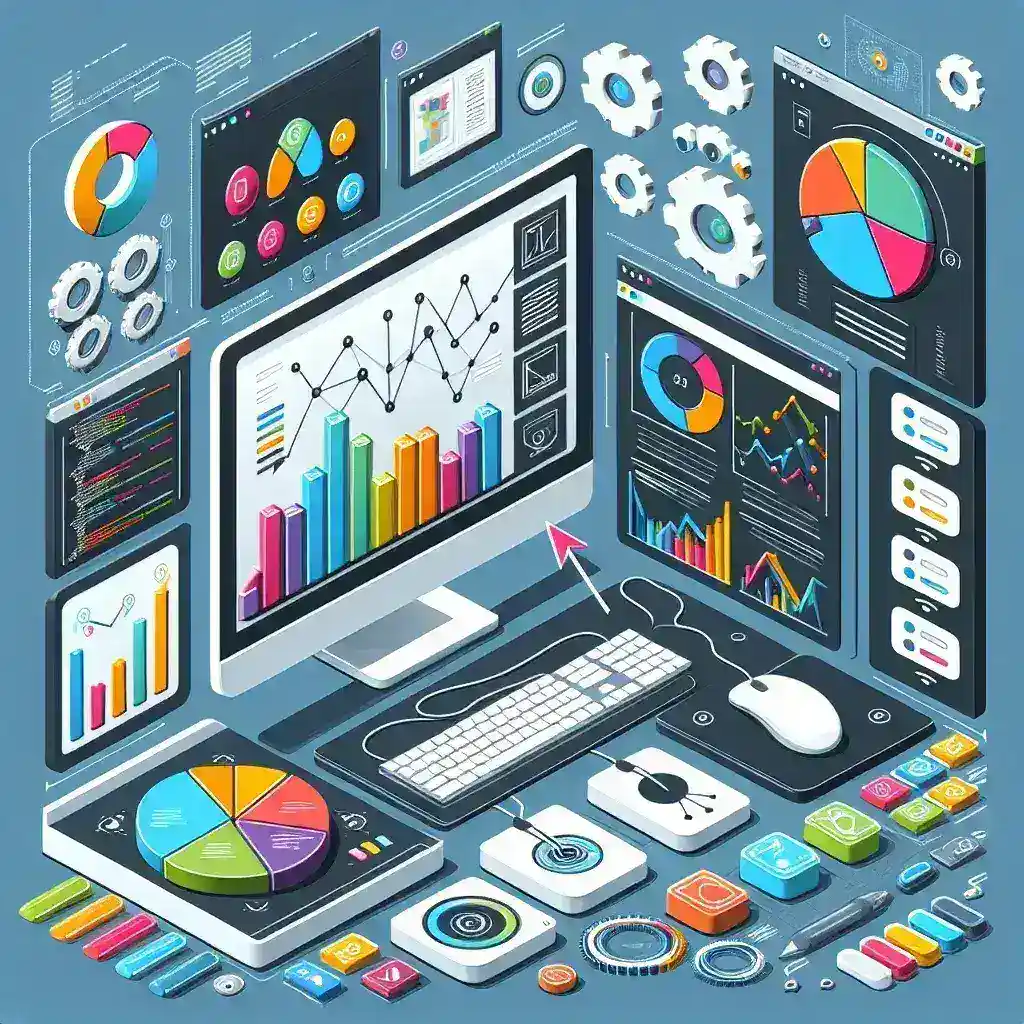Choosing the Right Software for Interactive Dashboards
In today’s data-driven world, interactive dashboards are essential for visualizing key performance indicators (KPIs), trends, and insights. Selecting the right software to build these dashboards is crucial for effective data analysis and decision-making. This guide explores various options, considering factors like ease of use, features, scalability, and integration capabilities.
Key Considerations When Selecting Dashboard Software
- Data Sources: Can the software connect to your existing databases, spreadsheets, and cloud services (e.g., Google Sheets, Salesforce, SQL Server)?
- Data Visualization Capabilities: Does it offer a wide range of charts, graphs, maps, and other visualizations to represent your data effectively? Look for options that allow for customization and branding.
- Interactivity: Can users drill down into data, filter information, and explore different perspectives? Interactive elements are key to uncovering valuable insights.
- Collaboration & Sharing: Can multiple users collaborate on dashboards, and can dashboards be easily shared with stakeholders? Consider features like user roles and permissions.
- Scalability: Will the software handle your current data volume and future growth? Ensure it can scale efficiently as your data expands.
- Integration: Does it integrate with other tools in your tech stack? Seamless integration is crucial for a streamlined workflow.
- Ease of Use: How user-friendly is the interface? A simple, intuitive interface is vital for non-technical users.
- Cost: Consider both the initial cost and ongoing subscription fees. Evaluate the value you get in relation to the price.
Types of Dashboard Software
The market offers a diverse range of dashboard software, catering to various needs and technical expertise. Here’s a breakdown of common types:
1. Spreadsheet Software with Dashboarding Capabilities
Software like Microsoft Excel and Google Sheets offers basic dashboarding capabilities. While suitable for simple dashboards, they may lack advanced features and scalability for larger datasets or complex visualizations.
2. Business Intelligence (BI) Platforms
BI platforms like Tableau, Power BI, and Qlik Sense are powerful tools for building sophisticated interactive dashboards. They offer a wide array of features, including data blending, advanced analytics, and robust data visualization capabilities. However, they often come with a higher price tag and require more technical expertise.
3. Data Visualization Libraries
For developers, libraries like D3.js, Chart.js, and Plotly.js offer greater control over dashboard creation. They require coding skills, but provide immense flexibility and customization options. This approach is ideal for building highly customized and unique dashboards.
4. Low-Code/No-Code Dashboard Builders
These platforms, such as Grafana, allow users to build dashboards with minimal coding. They often provide drag-and-drop interfaces and pre-built templates, making them accessible to non-programmers. They offer a balance between ease of use and functionality.
Popular Software Options
Here are some examples of popular software used for building interactive dashboards:
- Tableau: A leading BI platform known for its powerful visualization capabilities and ease of use.
- Power BI: Microsoft’s BI solution, tightly integrated with other Microsoft products, offering excellent data connectivity.
- Qlik Sense: A powerful BI platform with strong associative analysis capabilities, allowing users to explore data relationships intuitively.
- Grafana: An open-source platform particularly well-suited for monitoring and observability dashboards.
- Data Studio (Looker Studio): Google’s free data visualization tool, ideal for creating dashboards from various Google services.
Note: The best software for you will depend on your specific needs and technical skills. Consider your data sources, desired features, budget, and team’s expertise when making your decision. Many vendors offer free trials, allowing you to test the software before committing to a purchase.
Building interactive dashboards is crucial for effective data analysis. By carefully considering the factors outlined above and exploring the different software options available, you can choose the tool that best fits your needs and empowers you to make data-driven decisions.
To learn more about specific software options and their features, you can visit a relevant resource website.



